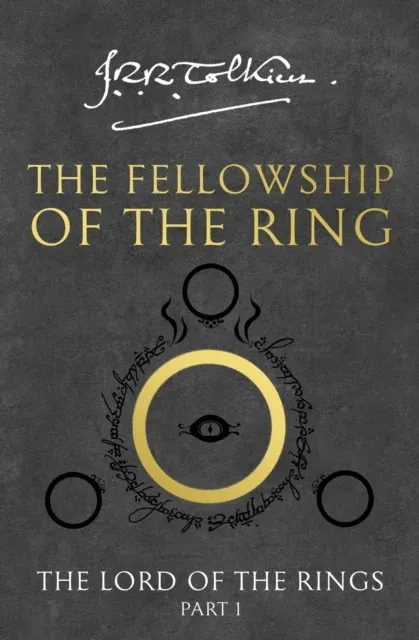The Feudal System

The feudal system was a way of governing used in the Middle Ages and the Renaissance. In this paper, I will explain the feudal system, its mode of government, and the social classes involved therein. I will also write about some examples of feudalism in literature.
The Feudal System - Classes and How it Works
The feudal system was a way of governing in the Middle Ages and the Renaissance. It was used mainly in Europe and in some areas of Asia, particularly China and Japan. In this paper, I will focus on European feudalism.
How did it work?
In feudalism, the country (called a kingdom) was ruled over by a king or queen. This ruler had absolute authority and passed down the right of kingship to his heir, usually the firstborn boy in the family. If the king had no male heir, the oldest daughter or his wife would rule as a queen. Other than that, he could appoint a successor, for example, his brother.
The king was the absolute owner of all the land in a kingdom. When a king gave some land to a noble or knight, it would be "held", not owned as a fiefdom. This meant that the king was able to dictate what went on in nobles' lands. Laws that the king made did not have to be approved by anyone because the king owned all the land and what he said went.
Since the king could not rule all the land by himself, he would appoint nobles to rule certain areas of his kingdom for him. The nobles would take their orders directly from the king, and they had quite a few privileges and responsibilities. Nobles would have to raise troops to defend their land from invasions, and they would take a part of the income it made as their pay. They would also have to supply the king's army with troops or send "scutage", a sum of money used to hire mercenaries if he could not supply troops. A noble could leave the land he held to his heir, his closest relative.
Many times, the nobles would not be able to control all the land given to them, and they would further subdivide their fiefdoms by giving control of certain areas to knights. The knights, like nobles, had responsibilities in defending and maintaining the land. The size of a knight's fief depended on how many warriors he brought with him and had to supply. Unlike nobles, knights were expected to attend battles personally.
Knights were trained for battle from a young age. They spent their entire lives learning to fight on horseback and were essential on the battlefield. After completing training (usually when the knight was eighteen to twenty-one years old), a squire would be knighted by another knight, a noble, or the king. Sometimes, an ordinary soldier could be knighted if he showed courage on the battlefield. Usually, only nobles' and knights' sons could become knights themselves, but there were a few cases in which freemen's sons could attain knighthood.
Since knights did not do menial tasks like farming and trading, these tasks usually went to the freemen. Freemen usually rented their land from the knights or nobles and farmed the fields to provide the kingdom with food. They could also have other jobs, like trading and various crafts such as the tanning of leather, making of shoes, and, of course, the production of alcoholic beverages. If a freeman became rich enough, he might even be promoted to the nobility.
Finally, the lowest class in the feudal society were the serfs. These were servants in a knight or lord's manor. Serfs would not be allowed to leave their village, marry, or change their occupation unless their owners consented. Serfs were expected to provide for their subsistence. A serf would become a freeman if his lord freed him – this would usually happen if the serf or someone else paid for his freedom.
What happened to the feudal system?
How it began
The feudal system really started around the eighth century BC, when Charles Martel of the Franks awarded his nobles tracts of land in the territories he conquered in exchange for loyalty and some supplies to provide for his army. This system became more and more used.
Another early example of feudalism is in the 10th century, when the Viking chief Rollo became a vassal of the French king Robert I after being defeated in battle, receiving the title of Count of Rouen (later Normandy). His descendant, William III "the Conqueror" became the king of England and had his own vassals.
How it ended
As the military of nations like France and England changed from armies consisting of the nobility to professional soldiers, the feudal system began to be less used. The last feudal state in Europe, the island of Sark in the English Channel, ended feudalism in 2008, but many other countries changed long before that – France ended feudalism in the 1790s with the collapse of the "ancien régime".
Examples of Feudalism in Literature
Many literary works depict feudalism, especially ones written in the time period in which feudalism was practiced. For example, in Beowulf, all the kings portrayed in the story reward their most loyal subjects. Hrothgar rewards Beowulf after he slays Grendel, and Beowulf rewards Wiglaf by giving him the kingdom to rule after he dies, even though the knight was not his relative.
Another example of feudalism in literature is in Sir Gawain and the Green Knight. This story shows us what a knight is supposed to do in different situations. A relevant example from this story is when the Green Knight gave his challenge to King Arthur, Gawain stepped in and took the challenge instead so that his king would not be in danger. In other words, he was loyal to his king even though it might mean his death later.
Conclusion
The feudal system was a mode of government used primarily in the Middle Ages. It emphasized loyalty – the most loyal of the king's servants were granted fiefdoms. Feudalism was used in many writings of its time and even now in fictional works, like The Lord of the Rings.
Works Cited:
Brown, Elizabeth A.R. "feudalism". Encyclopedia Britannica, 19 Oct. 2023, https://www.britannica.com/money/topic/feudalism. Accessed 23 January 2024.
Cartwright, Mark. "Feudalism." World History Encyclopedia. World History Encyclopedia, 22 Nov 2018. Web. 23 Jan 2024.
Britannica, The Editors of Encyclopaedia. "knight service". Encyclopedia Britannica, 20 Jul. 1998, https://www.britannica.com/topic/knight-service. Accessed 24 January 2024.
Cartwright, Mark. "How to Become a Medieval Knight." World History Encyclopedia. World History Encyclopedia, 08 Jun 2018. Web. 24 Jan 2024.
“Peasants.” Feudalism: Rights and Responsibilities, feudalism-rights-resposibilities.weebly.com/peasants.html. Accessed 25 Jan. 2024.
Newman, Simon. “Social Classes in the Middle Ages - the Finer Times.” The Finer Times, 25 May 2012, www.thefinertimes.com/social-classes-in-the-middle-ages. Accessed 25 Jan. 2024.
Newman, Simon. “Crafts in the Middle Ages - the Finer Times.” The Finer Times, 29 May 2012, www.thefinertimes.com/crafts-in-the-middle-ages. Accessed 25 Jan. 2024.
Britannica, The Editors of Encyclopaedia. "serfdom". Encyclopedia Britannica, 1 Sep. 2023, https://www.britannica.com/money/topic/serfdom. Accessed 29 January 2024.
“HISTORY OF FEUDALISM.” HISTORY OF FEUDALISM, www.historyworld.net/wrldhis/PlainTextHistories.asp?ParagraphID=eoa. Accessed 31 Jan. 2024.
Brownworth, Lars. “The Normans.” From Raiders to Kings, Crux Publishing, 2014.
Negrean, Mihai. “Beowulf Response to Literature Notes.” The Homeschooler, 19 Sept. 2023, www.homeschooler.info/beowulf-response-to-literature-notes.
Gummere, F.B. (1910). Beowulf. New York: P.F. Collier and Son.
Fraser, Hugh. “Sir Gawain and the Green Knight Part One - Storynory.” Sir Gawain and the Green Knight Part One - Storynory, 14 Dec. 2009, www.storynory.com/sir-gawain-and-the-green-knight-part-one.
Fraser, Hugh. “Sir Gawain and the Green Knight Part Two - Storynory.” Sir Gawain and the Green Knight Part Two - Storynory, 21 Dec. 2009, www.storynory.com/sir-gawain-and-the-green-knight-part-two.




